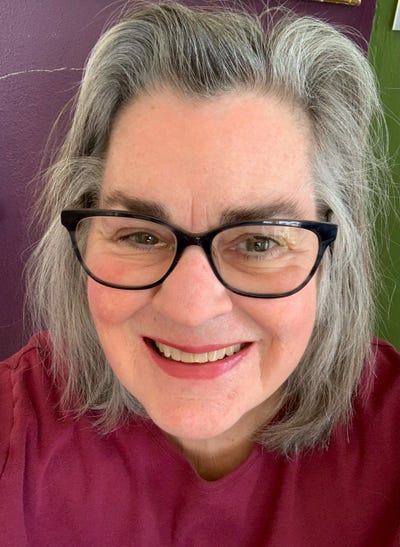April 24, 2008

Rod Stewart writes cheesy songs about them. Shoe designers develop 4-inch stiletto heels to make them look longer. Models take out million-dollar insurance policies on them.
Legs—they're more than just the mass of bones and muscle that move you through your day. They're appendages whose mystique extends beyond function. But it can take more than just good genes, a killer workout regimen and a dedicated diet to produce great-looking legs. Here's a look at some of the vitamins, herbs and natural products your customers can use to keep their legs and feet looking beautiful.
Sleek Legs
Legs have few oil glands, so they can easily become dry and scaly. That's why moisturizers are key to achieving sleek legs. But for many people, conventional moisturizers are not enough, says Dennis Sepp, Ph.D., owner of Santa Rosa, Calif.-based ShiKai.
Sepp says dry skin can be caused by a lack of gamma-linoleic acid, or GLA. Typically the body makes all the GLA it needs from linoleic acid, an omega-6 fatty acid found in many foods. Certain conditions, including advanced age, diabetes and elevated cholesterol levels prevent the body from converting linoleic acid to GLA efficiently. Sepp says one-third of the population also lacks an enzyme that converts linoleic acid to GLA. In those cases, a supplement can be helpful. The best sources are evening primrose oil, borage oil or black currant seed oil.
ShiKai's Borage Dry Skin Therapy produces results in two weeks, Sepp says, and can also treat eczema. "It comes in a cream form, so you have to rub it around to spread it in and bring blood to the surface. You have to work it," he says. It's beneficial to bring blood to the skin's surface because it carries oxygen, which helps regenerate and repair tissue.
Huntsville, Ala.-based registered herbalist Phyllis D. Light's leg emollient of choice is jojoba oil, because it soaks into the skin easily and doesn't feel greasy. She also prefers fish oil to borage oil because fish oil has omega-3, -6 and -9 acids.
Shaving Savers
Although our European sisters can proudly flash hairy legs and still be socially acceptable, many American women are razor slaves. Some shower gels allow for a friction-free shave, and naturals companies also make products specifically for shaving.
Alba Botanica and its parent company, Petaluma, Calif.-based Avalon Natural Products, make shaving creams with ingredients such as vitamin E and jojoba oil, birch leaf, yarrow and green tea (all astringents), lavender and aloe vera (to soothe the skin). Avalon spokesman Tim Schaefer says Alba Botanica's Cream Shave has no surfactants, or ingredients that produce foam. Instead, the cream breaks down to a slick, watery consistency as it's rubbed into the skin. The advantage to a surfactant-free product is it's nondrying, Schaefer says.
Gardiner, N.Y.-based Kiss My Face has an extensive line of shaving creams, featuring ingredients such as lime, peppermint and sage (antiseptics), soapwort (a natural surfactant), horsetail and goldenseal (healers), watercress (an emollient), and lemongrass and orangeflower (fragrances).
Light says the best way to ensure shaving doesn't damage skin is to change razor blades often. "A sharp razor cuts hair, but a dull blade scrapes off the top layer of skin," she says. To soothe skin after shaving, she recommends rosewater, which provides quick surface hydration.
The Color Of Legs
We know it's not healthy, but the myth of tanned legs is that they contribute to a thinner, healthier and more glamorous look. There's a veritable ocean full of topical self-tanners available, but Green Bay, Wis.-based EuroPharma has developed Solaire, a capsule the company says helps you tan with less time in the sun.
EuroPharma President Terry Lemerond says Solaire "jump-starts the skin's melanin production for a beautiful tan." Solaire relies on beta-carotene and a full spectrum of carotenoids produced in Dunaliella salina marine algae to increase skin pigmentation. This reduces the amount and length of sun exposure necessary to tan, Lemerond says.
The carotenoids in Solaire attach to receptor sites in melanin skin cells and fill them in, producing more pigmentation, Lemerond says. The depth of tan depends on the number of receptor sites. "The fewer you have, the paler you are," he says. Solaire has been available in France for 10 years and was introduced in the United States in March. Although no research has been conducted on Solaire, a study published in the March 2000 issue of The American Journal of Clinical Nutrition reported that carotenoids reduce the chance of skin damage caused by exposure to the sun.
Fat-Free
Cellulite is many women's nasty little secret. A fierce debate rages about whether the dimpled fat known as cellulite can really be reduced, but the makers of a new gel say their product does the trick.
Annemarie Borlind's Body Vital cellulite gel is backed by a December 2000 study by the Munich-based independent clinical research organization Phacos. Researchers found that 30 volunteers who used Body Vital twice daily reduced their cellulite by 33.5 percent after eight weeks. Cellulite levels were measured by ultrasound.
"Studies show that women's fat is shaped like ovals, and when it bulges up through the grid of tissue, it forms cellulite," says Linda Upton, vice president of sales and training for Annemarie Borlind of Germany. "Our product tones skin so the surface of the skin can hold fat in better and reduce the dimpled appearance [of cellulite]."
However, Upton cautions, "Can you get rid of cellulite with a cream? Absolutely not. There's no question that lifestyle affects it, but some skinny, very healthy, very athletic individuals have the orange peel, dimpled appearance [of cellulite]."
Upton says there are five main components to Body Vital: seaweed extract, which tightens and elasticizes skin, strengthens capillary walls and prevents free radical damage; butcher's broom, an herb that tightens and tones the veins; caffeine, which stimulates lipase, an enzyme that breaks down fats; menthol, which cools the skin; and a vitamin C liposome, which stimulates circulation.
For those plagued by varicose veins (veins that have become enlarged and twisted by pooled blood) or spider veins (short, fine, red lines caused by broken capillaries), herbs and vitamins can help, Light says. Horse chestnut has long been a treatment for varicose veins, but a 1996 European study published in Lancet found that long-term horse chestnut supplementation can cause gastric complications, nausea and kidney strain. Light prefers butcher's broom, which she says tightens and tones the veins with fewer side effects than horse chestnut. It's also helpful for reducing swelling in legs, she says.
Yarrow, taken internally or externally, can help break up blood deposits, prevent stagnation and eliminate spider veins, Light says. "You can buy yarrow salve and rub it in every day for two to three minutes. It takes a while—a good six months—but the spider veins don't come back. Even more effective is drinking a cup of yarrow tea daily."
Light says topical vitamin K applied for several months can eliminate spider veins, but cautions against taking it internally because it can cause blood clots.
Beautiful Feet
"She has lovely legs" is a frequent compliment; "she has lovely feet" is not, so feet are often the forgotten part of the body when it comes to health and beauty products.
Corte Madera, Calif.-based EO Essential Oil Products manufactures four foot care products for the oft-neglected tootsies. EO's Revitalizing Lotion for Legs and Feet contains essential oils of peppermint (to refresh) and menthol (to cool); mango seed butter (for healing skin irritations and wounds); and vitamins A and E (to fight free radicals).
The company's FootBalm is a cream with mango seed butter, vitamins A and E, peppermint and lavender essential oils, and safflower oil, which absorbs well and is less greasy than other oils, says EO Director of Marketing and Product Development Lisa Bazinet.
EO's FootScrub consists of kaolin clay, honey and brown rice, and its FootSpray contains lavender (to cool and refresh) and tea tree oil (an antibacterial).
Light says feet are "one area of the body where the skin is thick and tough. Essential oils are very helpful." Lavender and jojoba oils can soften calluses, she says.
Cayenne, which equalizes blood pressure, can help people—particularly menopausal women—who suffer from cold feet and hands, she says. Taken internally it can improve blood circulation to all areas of the body, including hands and feet.
And, of course, it's important not to forget the toenails. Nail fungus can be treated with tea tree, neem or rosemary oil, Light says. Boca Raton, Fla.-based No Miss Skin & Nail Care Products makes No-Miss Fungus Killer featuring sea salt, iodine, potassium sorbate, thymol (from the thyme plant) and miconazole nitrate (from mushrooms). It is important to treat the fungus long after symptoms improve because the fungus can continue to grow.
No Miss also produces toluene- and formaldehyde-free polishes, says Manager and Formulator Maria Pflug. Toluene is a synthetic solvent that helps dissolve dyes. No Miss relies on a variety of tree bark extracts in place of solvents, Pflug says. Formaldehyde helps nail polish harden; No Miss substitutes tree gums. The tradeoff is that natural nail polish can be thicker and take longer to dry than polishes with synthetic and carcinogenic ingredients, she says.
No Miss products also have "no unnatural dyes or unapproved dyes," Pflug says, but instead use sand-based micas for color. Glitter polishes feature natural metals. The company also makes Almost Natural Nail Polish Remover, which uses fruit acids to remove polish rather than acetone—which can cause splitting and peeling of the nails and may irritate the lungs.
Vicky Uhland is a Denver-based freelance writer. She may be reached at [email protected].
Natural Foods Merchandiser volume XXIV/number 5/p. 32, 34
About the Author(s)
You May Also Like
.png?width=700&auto=webp&quality=80&disable=upscale)




